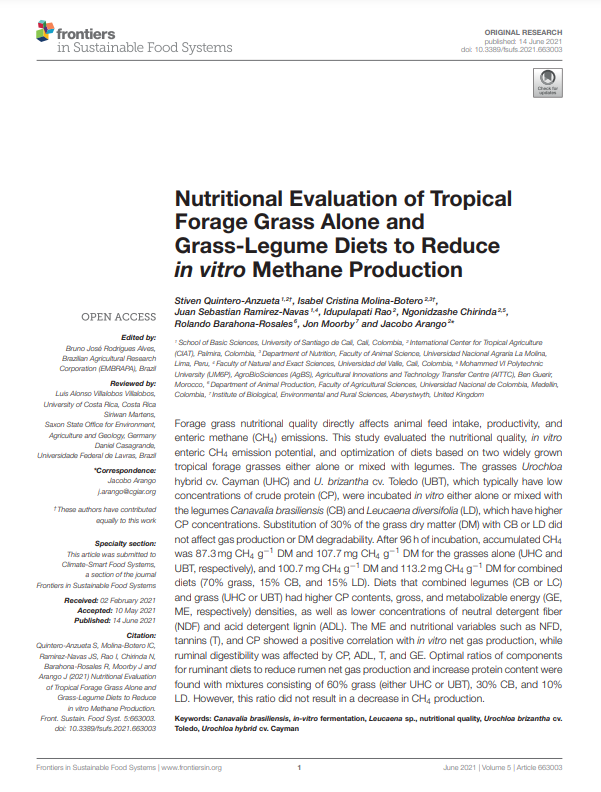Forage grass nutritional quality directly affects animal feed intake, productivity, and enteric methane (CH4) emissions. This study evaluated the nutritional quality, in vitro enteric CH4 emission potential, and optimization of diets based on two widely grown tropical forage grasses either alone or mixed with legumes. The grasses Urochloa hybrid cv. Cayman (UHC) and U. brizantha cv. Toledo (UBT), which typically have low concentrations of crude protein (CP), were incubated in vitro either alone or mixed with the legumes Canavalia brasiliensis (CB) and Leucaena diversifolia (LD), which have higher CP concentrations.
Substitution of 30% of the grass dry matter (DM) with CB or LD did not affect gas production or DM degradability. After 96h of incubation, accumulated CH4 was 87.3mg CH4 g−1 DM and 107.7mg CH4 g−1 DM for the grasses alone (UHC and UBT, respectively), and 100.7mg CH4 g−1 DM and 113.2mg CH4 g−1 DM for combined diets (70% grass, 15% CB, and 15% LD). Diets that combined legumes (CB or LC) and grass (UHC or UBT) had higher CP contents, gross, and metabolizable energy (GE, ME, respectively) densities, as well as lower concentrations of neutral detergent fiber (NDF) and acid detergent lignin (ADL). The ME and nutritional variables such as NFD, tannins (T), and CP showed a positive correlation with in vitro net gas production, while ruminal digestibility was affected by CP, ADL, T, and GE. Optimal ratios of components for ruminant diets to reduce rumen net gas production and increase protein content were found with mixtures consisting of 60% grass (either UHC or UBT), 30% CB, and 10% LD. However, this ratio did not result in a decrease in CH4 production.![]()
Quintero-Anzueta, Stiven; Molina-Botero, Isabel Cristina; Ramirez-Navas, Juan Sebastian; Rao, Idupulapati; Chirinda, Ngonidzashe; Barahona-Rosales, Rolando; Moorby, Jon; Arango, Jacobo

